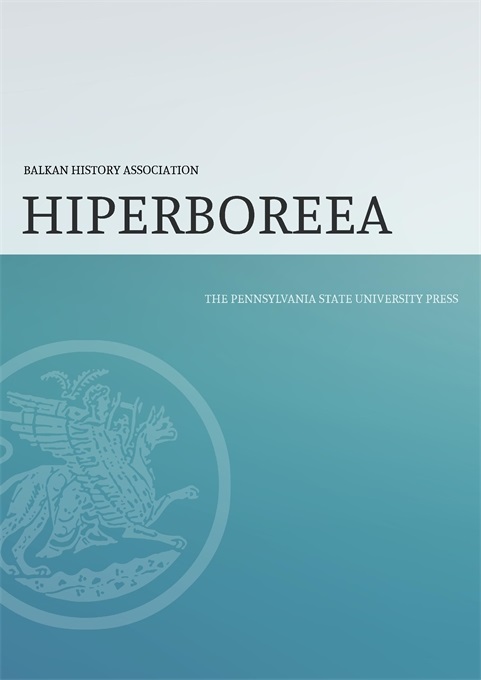
Alexios Savvides’ Byzantino-Russica: Six-and-a-half centuries of Byzantine-Russian relations covers precisely what the title suggests, and is divided into two segments.
The first part comprises the following sections: the introduction; the Christianisation of the Russians and its importance; The Primary Chronicle or Russian Primary letopis as a source; a chronology of Byzantine-Russian relations; invasions and trade relations before, during and after the Russian Christianisation; the ideology of the “Third Rome” and the Byzantine heritage in Russia; research perspectives on the theory of the “Third Rome”; studies of international bibliography on Byzantine-Russian relations; the study of Russian culture and civilisation in Greece today; Greek translations of works of Russian Byzantinology and their importance. The first part also includes an appendix with the names “Rus,” “Russians,” and “Russia” and a concise chronology covering the years 838/839-1589.
The second part includes: the introduction; a detailed analysis of research and bibliography on Byzantine-Russian relations and Medieval Russian history; a chronology; and an appendix with the representation of Byzantine-Russian relations in secondary education.
On pages 25-28, the author explains the importance of the Russian Christianisation for World History. Based on current research, the Christianisation of the Russians took place between 987 and 989. The marriage of Grand Prince Vladimir the Great with Anna Porphyrogenita, and Vladimir’s and his people’s Christening are two critical events. However, according to the author, current evidence does not clarify the chronological distance between these occurences. Another important event which needs to be taken into consideration, as the author explains, is the arrival of the Varangians who helped the Emperor Basil II Bulgaroktonos to face the uprisings. Again, current research does not shed light on which event preceded the other. As regards the disagreement on the actual year of the Christianisation, the author explains that scholars of Slavology point to the year 988 or 987, while Byzantinists refer to 988/989 or 989.
On pages 29-31, the author provides some background information on how Vladimir helped the Byzantine Emperor Basil to defeat the revolts, and how the former applied pressure to Basil to keep the agreement.
On pages 31-32, there is important information about Vladimir’s actions after his Christianisation to impose the new religion on his people. Vladimir accepted the administrative power of the Ecumenical Patriarchate of Constantinople over the newly established Russian Church. The author cites Dimitri Obolensky and Zinaida Vladimirovna Udaltsova, who also explain that Russia built its culture and new identity on the Byzantine tradition. On page 33, the author cites Enno Franzius, who claims that Byzantine civilisation contributed to the creation of the Russian nation.
The use of the Russian language in Orthodox life is another landmark. On pages 33-34, Savvides refers to Levčenko: the connection of Orthodoxy with the Slavic language meant that the Byzantine Church established the foundations of a Russian spirituality. In an era when the Roman Catholic Church persisted in the use of Latin, the Byzantines allowed the Russians to introduce Christian teaching through the Slavic language. The Byzantine Empire implemented an effective system of foreign policy and church policy, promoting Orthodoxy.
On pages 37-44, the author explains the importance of The Primary Chronicle, as primary material for the Christianisation of the Russians. Russians’ turn to Christianity changed the whole of Russian History, in a similar fashion to the case of Boris I of Bulgaria and his people.
On pages 45-56, Savvides analyses the chronological framework. He explains that Byzantine-Russian relations precede the Christianisation of the Russians by several years. One can detect the first encounters between the two nations, during the years of the Emperor Theophilos and in particular in 838/839-840-842. During these years one can see the first appearance of Russians in Asia Minor and the Black Sea. Also, in the summer of 860 Rus’ fighters appeared for the first time in Constantinople. Soon after, the Byzantines would start their missionary work with Saints Cyril and Methodius. The author refers to the administrative divisions of thémata as an important measure for the protection of the empire’s borders, and the contribution of the Khazars during the great Russian attack of 860. The author aptly asserts that a comprehensive table of Byzantine-Russian relations should include earlier stages of Christianisation, prior to the official event. However, this is a topic which needs further examination and research. The author also discusses the role of the Patriarch Photios and his missionary work.
The ideology of the “Third Rome” is discussed on pages 79-88, with references to the views of other prominent scholars. As the author aptly notes, this ideology of a “Third Rome” developed after the siege and fall of Constantinople in 1453. Two important primary sources are Nestor Iskander’s Tale on the Taking of Tsargrad and the Russian Narrative on the Siege of Constantinople. The author juxtaposes effectively different views on how far Moscow was a continuation of the Byzantine Empire, giving the reader the opportunity to read them with a critical eye.
On pages 89-94, Savvides deals with the limitations of the theory of a “Third Rome”, and again, juxtaposes views by different scholars on the adoption or rejection of this theory. Especially important is, perhaps, Meyendorff’s view that even after the fall of Constantinople, the Grand Prince of Moscow did not claim to be the successor of the Byzantine Emperor.
On pages 103-106, the author refers to the contribution of university departments and other centres in Greece which focus on Russian studies, Balkanology and Slavology. These are: the Department of the Russian Language, Philology and Slavology at the Philosophical School of the University of Athens; the Hellenic Association for Slavic Studies (Thessalonica); the Department of Language, Philology and Culture of the Black Sea Countries at Democritus University; the Department of Balkan, Slavic and Oriental Studies at the University of Macedonia; the Greek Committee for South-East European Studies; and the Institute for Balkan Studies, supported by the Ministry of Culture, Education and Religious Affairs.
On pages 269-275, the author gives information about the different textbooks used in History for Secondary Education. The analysis is rather critical of the Greek education system, as according to the author most of these textbooks do not provide sufficient material for study on themes relevant to Byzantine-Russian relations.
Overall, Alexios Savvides’ book is a comprehensive study which meets its goals. This is a book for academics and specialists in Byzantine and Medieval Studies and for undergraduate and postgraduate students of Medieval History. It is also a very important source for researchers in general and for those who have a personal interest in history.
Iakovos Menelaou, PhD, Balkan History Association


